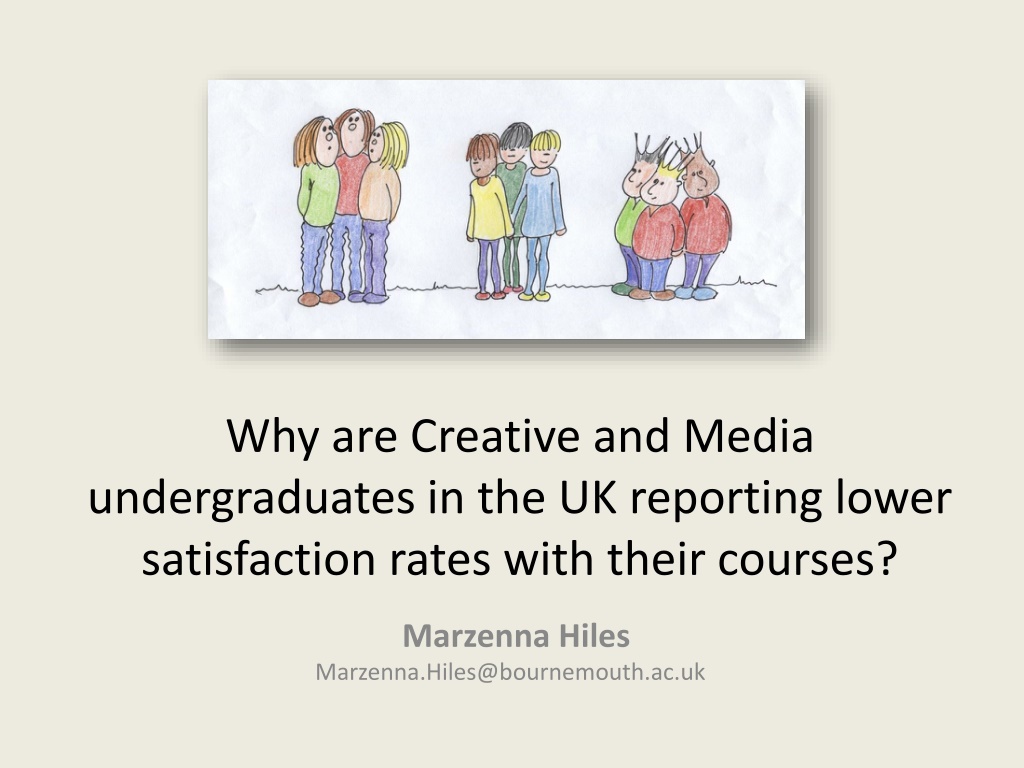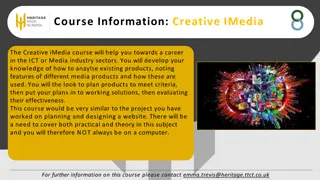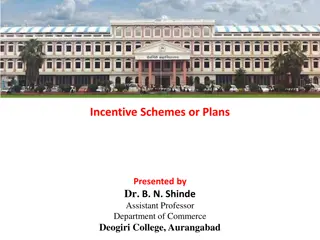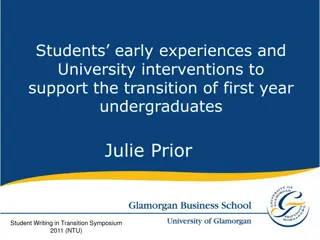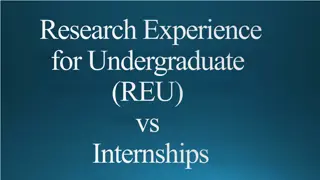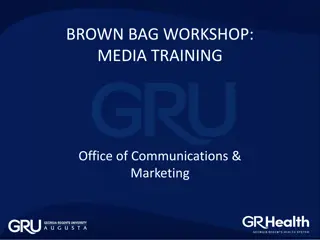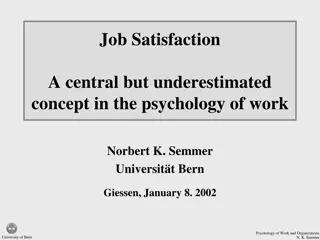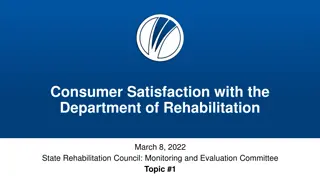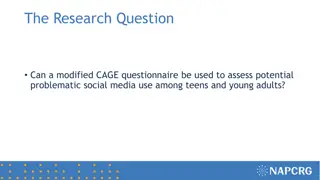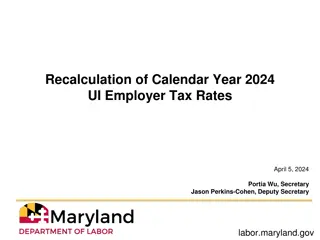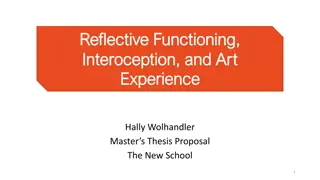Understanding Lower Satisfaction Rates Among Creative and Media Undergraduates in the UK
Undergraduate students in the UK studying Creative and Media subjects are reporting lower satisfaction rates with their courses. The UK National Student Survey (NSS) plays a vital role in evaluating student expectations and satisfaction, with a focus on teaching quality, assessment feedback, academic support, organization and management, learning resources, personal development, and overall satisfaction. Insights from student surveys and interviews shed light on student perceptions, highlighting factors such as intellectual stimulation, feedback mechanisms, course organization, and the unique perspectives of art and design students.
Download Presentation

Please find below an Image/Link to download the presentation.
The content on the website is provided AS IS for your information and personal use only. It may not be sold, licensed, or shared on other websites without obtaining consent from the author. Download presentation by click this link. If you encounter any issues during the download, it is possible that the publisher has removed the file from their server.
E N D
Presentation Transcript
Why are Creative and Media undergraduates in the UK reporting lower satisfaction rates with their courses? Marzenna Hiles Marzenna.Hiles@bournemouth.ac.uk
How do we know what students think of our courses?
Different student survey instruments USA NSSE USA Noel-Levitz = 3 types (Parent Satisfaction Inventory) Australia AUSSE and CEQ UK HEPI & Which? UK NSS
The UK National Student Survey uses twenty-two questions Q. 1-4, THE TEACHING ON MY COURSE Q. 5-9, ASSESSMENT AND FEEDBACK Q. 10-12, ACADEMIC SUPPORT Q. 13-15, ORGANISATION AND MANAGEMENT Q. 16-18, LEARNING RESOURCES Q. 19-21, PERSONAL DEVELOPMENT Q. 22, OVERALL SATISFACTION.
The UK National Student Survey It considers student satisfaction; how well the course and university meet student expectations. EXPECTATION - FULFILMENT = SATISFACTION (Buckley 2012) UK NSS set up in 2005 to help prospective students evaluate and choose courses, currently undergoing the Higher Education Funding Council ten year review. UK NSSE PILOT STUDY and WHAT WORKS
NSS Creative and Media Subjects https://encrypted-tbn2.gstatic.com/images?q=tbn:ANd9GcR44q4fkozA7e07MnOuWK7bhmeK16doYEoPRajc0-oCQoup0GuN CREATIVE AND MEDIA SUBJECTS HAVE LOWEST SATISFACTION SCORES (NSS 2013, question 22)
What do students think? Erm...... that question.....I think I probably would ve just put something in the middle and sort of moved on to the next one, because I think it s really unclear - How art and design students understand and interpret National Student Survey. Report by GLAD for HEA (Blair, Orr and Yorke 2012). Interviewed 12 students at two HEIs.
What students say Q 1-4, Staff: students not sure if this includes technicians. Q 4, Intellectually stimulating confused academic with intellectually stimulating . Art and Design students see themselves as creatives , not academics. Q 5-9, Feedback: on-going? Written? Chats in studio? Q 15, Course organisation: students thought this meant how they contributed to its running. Q 22, Overall satisfied? No good definition of quality.
Why do tutors think C&M students are unhappy? I can t believe it s not better: paradox of NSS scores for A & D (Vaughan and Yorke 2009) Tutors interviewed at 17 Higher Education Institutes o More students have dyslexia (and so do tutors) o Lack of resources (30% more students, same resources) o Students reflect tutors unhappiness o Some tutors do not promote NSS to ensure low response rates o NSS does not relate to A & D subjects o Hard to assess group work or how students learn o Lots of Part-time tutors and specialists
More student survey research 'Student experience' surveys: some methodological considerations and an empirical investigation. (Yorke 2009) Students recall most recent events Both NSS and CEQ present rosier picture of students than perhaps they should Quality of degree is reflected in NSS data some Student Union officers are reportedly advising students to give high feedback scores
More student survey research Bowman and Hill (2011) - American study of 171 students using NSSE feedback Students overinflate their achievements Porter (2010) Paper presented at Association for Institutional Research, Chicago. Can students recall events accurately? Can how students see themselves affect student responses are errors loaded in positive direction to improve student self- image? Porter and Whitcomb (2005) Half of students fail to respond Enterprising students less likely to participate in surveys.
Can student surveys, including NSS, accurately reflect Creative and Media students course experiences?
Thank you Marzenna.Hiles@bournemouth.ac.uk
Biblio Blair, B., Orr, S. And Yorke, M., (2012). 'Erm, that question....I think I probably would've just put something in the middle and sort of moved on to the next one, because I think it's really unclear': How art and design students understand and interpret National Student Survey. Report by GLAD for HEA. York: HEA. Bowman, N., A. and Hill, P., L., (2011). Measuring how college affects social desirability and other potential biases in college student self-reported gains. New Directions for Institutional Research, Summer 2011, 150. Wiley Periodicals Inc. Buckley, A., (2012). Making it count: reflecting on the national student survey in the process of enhancement. York: Higher Education Academy Buckley, A., (2013). Engagement for enhancement: report of UK survey pilot. April 2013. York: Higher Education Academy. Chickering, A., W. and Reisser, L., (1993). Education and Identity. San Francisco, CA: Jossey-Bass. 2nd Edition. Higher Education Academy (2013). Engagement for enhancement. Institutional case studies for a UK Survey Pilot. York: Higher Education Academy Higher Education Academy (2012). Art and design, cinematics and photography, design studies, fine art, others in art and design, National Student Survey discipline report. September 2012. York: HEA. Milem, J., F., (1998). Attitude change in college students: examining the effect of college peer groups and faculty normative groups. The Journal of Higher Education March-April 1998, 69 (2), 117-140. Porter, S., R., (2010). Do college student surveys have any validity? Paper presented at Association for Institutional Research 2010. Chicago, IL. 2010.
Porter, S., R. and Whitcomb, M., E., (2005). Non response in student surveys. The role of demographics, engagement and personality. Research in Higher Education, March 2004, 46, (2), 127-152. Quinn, J., (2005). Belonging in a learning community: the re-imagined university and imagined social capital. Studies in the education of adults. Spring 2005, 37 (1), 4-17. Quinn, J., (2010). Learning communities and imagined social capital: learning to belong. London, UK: Continuum International Publishing Group. Schein, E., H., (1997). Organizational culture and leadership. San Francisco, CA: Jossey-Bass (2nd Ed). Thomas, L., (2013). Building student engagement and belonging in higher education at a time of change: final report from the What Works? Student Retention and Success programme. England: HEFCE and HEA. Umbach, P., D. and Porter, S., R., (2001). How do departments impact student satisfaction? Understanding the contextual effects of departments. Paper presented at The Annual Meeting of the Association for Institutional Research 2001. Long Beach, California, USA. June 2001. Vaughan, D. And York, M., (2009). I can't believe it's not better: the paradox of NSS scores for Art and Design. York: ADM-HEA. Yorke, M. And Vaughan, D., (2012). Deal or no deal? Expectations and experiences of first-year students in Art and Design. Report to HEA and HEAD June 2012. England: HEA. Yorke, M., (2013). 'What Works?' Phase 2. Tracking engagement, belongingness and self-confidence. Paper presented at The Surveys for Enhancement Conference 2013. Manchester UK. May 2013. Yorke, M., (2009). 'Student experience' surveys: some methodological considerations and an empirical investigation. Assessment and Evaluation in Higher Education. December 2009, 34 (6), 721-739.
